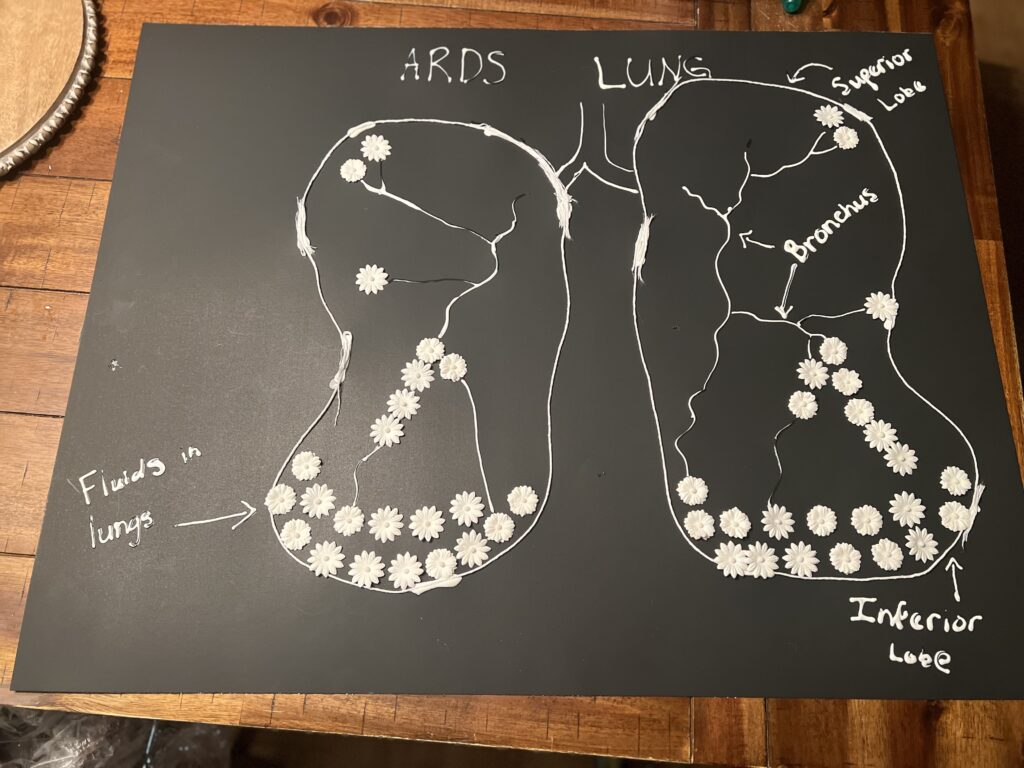Roughly 190,000 Americans are diagnosed with acute respiratory distress syndrome each year with a mortality rate between 47,500 and 76,000 people per year. ARDS is a very serious medical condition that allows fluids from the blood and interstitial spaces to cross the alveolar membrane as opposed to gas exchange occurring. This disease requires immediate and extensive treatment, and the most important organs that are impacted are the lungs and the brain. Even with survival rates improving thanks to modern medicine being what it is, we are still witnessing a very large mortality rate. The best treatment that can be afforded to such patients would be antibiotics, mechanical ventilation (although this can cause systemic inflammation), and increasing oxygen delivery while decreasing consumption.


Acute Respiratory Distress Syndrome, or ARDS, is a disease that affects the function and structure of the respiratory system through noncardiogenic pulmonary edema and inflammation that prevents efficient gas exchange across the alveoli. The edema and inflammation are due to having leaky blood vessels causing the symptoms and poor gas exchange. ARDS not only affects the lungs, but also the brain, which is stressed from hypoxia. Roughly 35% of ARDS patients develop an acute brain injury due to poor oxygenation, which requires mechanical ventilation, which can increase overall inflammatory mediators in the body. Symptoms of ARDS include shortness of breath, fast/labored breathing, rapid HR, low BP, and confusion. Most cases are diagnosed when investigating another issue, and ARDS can be attributed to traumatic brain injuries, sepsis/infection, toxic inhalation, head or chest injuries, blood transfusions, or burns as causes. Continued effects of ARDS include difficulty breathing, blood clots, collapsed lungs, infections, pulmonary scarring (fibrosis), brain fog/fatigue, and depression. ARDS has 3 stages based on the severity of fluid buildup, inflammation, the patient’s oxygen levels, and the predicted recovery time, ranging from exudative, to proliferative, to the fibrotic (most severe) stage. Depending on the severity, roughly 60-75% of patients will survive after receiving treatment (i.e. supplemental oxygen, ventilation, blood thinners, antibiotics, and diuretics to remove excess fluid). ARDS is commonly diagnosed through a chest X-ray, as demonstrated in the project, that often looks as if the lungs are filled with clouds (fluid buildup) around the impacted tissues.